Onirim – Solitaire Card Game
By: Asmodee Digital
Asmodee Digital’s iOS port of the physical solitaire card game, Onirim, is one of my favorite games of 2017, and perhaps ever. To give you an idea of how much I like it, take a look at my current stats. I’ve played over a thousand games. This is because it’s a perfect one-handed game to pick up and play at any time, without any worry about timers or other minutiae. Well, that was until the latest update.
Glyphs:
Initially, I was excited for the update. The previous one brought the Glyphs expansion pack for free, which I enjoyed but didn’t play as much because I didn’t like how the stats got mixed in with the stats from the original game. The two are very different, since the Glyphs pack adds four more doors to open, with the only extra help being eight new glyph cards. The glyph cards work like any other location card, but also have a special power if you discard one like you do a key. Instead of a Prophecy, it triggers an Incantation. This means that if there are any door cards within the top five cards of the pile, you can automatically unlock one of those doors without any other cards. The rest of the cards go to the bottom of the pile. If there is no door card, all five cards go to the bottom of the pile. This made things tricky, since you could end up wasting the cards like you do if you use a key for a Prophecy and there’s no Nightmare. It was a balanced, welcome challenge that didn’t dilute the original game or make it less worthwhile to play. It felt almost like a new game that you could play depending on what you were in the mood for. Barring the mixing of the stats between both versions, it was a very welcome update.
Crossroads and Dead Ends:
So that brings me to the latest update, which adds the Crossroads and Dead Ends expansion. Unlike the Glyphs, this one actually feels much easier to me. You don’t have any new doors to open, so it’s just the original eight. But you do have six extra location cards to work with, called Crossroads. These are essentially wild cards, as they can replace any color alongside other cards. There are three suns, two moons, and an extra key. So if you run out of a specific color, these wild cards can fill in for them. There is a variant ruleset called Intersection that is supposed to limit you to using the Crossroad cards only as the second in a series of three. But it seems to be bugged at the moment and I don’t have enough patience or willpower to limit it myself. It does seem like it would make things a bit more challenging, but without extra doors to open, I’m not sure that it’s enough of a balance for the overpowered Crossroad cards.
What is supposed to make the Crossroads expansion more challenging is the Dead End cards. These are basically cards that do nothing and can’t be discarded one by one. So they take up space in your hand, limiting you to holding fewer playable cards at a time. Still, they never cause too much of a problem for me. It usually means Nightmares are less of an issue, as they could end up just clearing out your Dead Ends for you instead of four cards you need. In that regard, Dead Ends almost seem to make things even easier. You can even discard your whole hand now at any point if you want to get rid of them. Overall, it seems like a very imbalanced expansion that doesn’t offer much excitement compared to the original game or the Glyphs expansion. What it does do is give you a leg up with the new scoring system, my biggest issue with the latest update. Perhaps the scoring was added because the expansion is too easy? I’m not sure, but after considerable testing, I have a lot to say about it.
Scoring:
Before this update, the game kept track of a few stats, as seen in the screenshot at the beginning of this article. It notes down the number of games you’ve played, how many you won, your win/loss ratio, your highest number of remaining cards left, and then the average of all your remaining cards. Since quitting a game counts as a forfeit, these numbers are meaningful and hard to fake. I suppose you could clear them anytime you lose and start them over, but where’s the fun in that? Instead, I’ve been working on my win ratio. Back when I was still new to the game, it hovered around forty to fifty percent. Now it’s over sixty percent, meaning I’m winning more often than I’m losing. I could perhaps clear my stats and start over, maybe get a better win ratio now that I have a handle on the game. But I much rather have a legitimate record of my Onirim journey, even if it means all my early losses bring my ratio down. These stats are pure and they do a good job reflecting the goal of the game and the fact that a big part of it is weighing your options, taking risks, and mitigating luck. It’s unlikely that you’ll make poor decisions and still end up with thirty cards left at the end, but you could make a mistake or two and still pull off a narrow win. That’s why these stats seemed to be a good reflection of the game’s essence. But there was no leaderboard of any sort, so you get no real bragging rights or any friendly competition pushing you to play and do better. I wanted a leaderboard that would somehow factor in the win/loss ratio and highest number of cards remaining. The good news is that they added a leaderboard in this latest update. The bad news is that it’s tied to a new — and very flawed — scoring system.
Here are the scoring rules for the base game in case you have trouble making it out in the screenshot above:
Series of 3 cards:
10 points per Star used
20 points per Moon used
50 points per Key used
Bonus points to each subsequent series (no other cards in between):
Chain directly series of 3 cards: +100/+200/+300… points
Chain directly series of 3 cards of the same color: additional +100/+200/+300… points
Specific event points
100 points per door unlocked with a key
200 points per Nightmare discarded using prophecy
Final bonus points
At the end of the game you will get bonus points for remaining time and number of cards left.
Let’s look at those rules first and then I’ll get into additional rules for the expansions. In the original game, your goal is to open all eight doors using as few cards as possible, so you have more left at the end. Deciding whether to use a key for a Prophecy, or hold onto it in case a Nightmare comes, or use it as part of a series of three cards — these are all choices you make by calculating the risk and reward and everything you’ve done so far. Whatever choice you make, the reward or punishment is the result of it. If you use a key for a Prophecy and there’s no Nightmare, you threw out a precious key for nothing and that leaves you vulnerable. It will be that much harder to win. If you do end up with a Nightmare in the Prophecy, the reward is that you now have one less Nightmare to worry about. You have a better chance of winning now.
In the original game, you try to save keys so they can open doors immediately. Keys are the most valuable because you only need the one card to open a door instead of three. But besides that and the Prophecy, they can help you hold onto more cards when a Nightmare shows up. Yes, it hurts to have to sacrifice a key to a Nightmare, but it’s better than tossing out your whole hand or even the next five cards in the deck. Deciding to hold onto that key card as a safety net is a choice you make as part of your strategy. But here’s where things change with the scoring. If you noticed, you only get a hundred points for using a key to open a door. But you get two hundred points for using a Prophecy to get rid of a Nightmare. Holding onto a key as security against a Nightmare has essentially the same result if a Nightmare shows up, but you get no points for it. The game is essentially telling you that your strategy is wrong, even if everything else works out the same. You do get a score bonus for winning with more cards left, but it pales in comparison to the points you get for everything else. The same goes with the time bonus, which is why I’m not getting too bent out of shape about that. I don’t think a timer fits into a relaxed game, but I can ignore that more easily than the scoring itself.
Before, part of the strategy also meant occasionally sacrificing a single moon card after a sun-moon-sun series in order to place another sun-moon-sun of a different color. This is a common strategy that keeps you from wasting cards just because you don’t have two moons of the same color. In the original game, it is very easy to lose because you threw out too many cards while waiting for the one you need. Again, it all comes down to risk and reward. You take chances and if they pay off, it results in a win. But with this new scoring system, you’re penalized for using a “crossover” card to place the next series of cards to open a door. Instead of letting you find your own strategy to win, the game is weighing some moves higher than others. Instead of the simple, pure goal of winning using as few cards as possible, you’re now meant to constantly think about how many points a certain action will give you. It feels artificial and gimmicky. And the worst part is that it is impossible to get a high score with the original game. If you focus on points, you’ll likely just lose the game. The scoring system actually favors the expansions, particularly the Crossroads and Dead Ends.
These are the extra opportunities you have to score points if you include the Glyphs expansion:
Series of 3 cards:
70 points per Glyph used
Specific event points
200 points per door unlocked via an incantation
Seventy points for a glyph card! Remember that a sun only gives ten points. That alone is enough of a score advantage over the original game. But you also get twice as many points if you open a door using an Incantation as you do if you use a key to open a door. Already you have more opportunities to score higher, though the Glyphs expansion on its own is still fairly challenging with the extra four doors you need to open. So it’s still possible to lose if you focus too much on points.
Your best chance at getting a high score is to combine both expansions so you have a hundred cards in your deck to work with. Look at the new score opportunities you get with Crossroads and Dead Ends:
Specific event points
150 points per door unlocked with a crossroads key
200 points per dead end discarded via a Prophecy
Intersection variant
Series of 3 cards:
30 additional points if any crossroad used
The extra fifty points for the door unlocked with the Crossroads key doesn’t make much sense, as the low points for using a key to unlock a door is already undervaluing that move and pushing you away from using it. Why is using a wild card to do so considered more valuable? But there’s only one of these in the deck, so the bonus points are minimal. What really makes a difference is that you have an extra ten cards in the deck that you can use keys to discard, getting two hundred points each time. With the base deck, there isn’t such a big chance of there being a Nightmare in the top five cards when you use a Prophecy, so it could be wasted. But with ten more chances, it’s very likely that you’ll get those two hundred points even if you don’t get rid of a nightmare. And remember what I said earlier about the Dead Ends being useful for getting rid of Nightmares without having to sacrifice playable cards? They help even more with points. In this setup, it’s almost never worth using a key to open a door because you only ever get a hundred points for it. In fact, this is the first time I’ve seen any use for the option to put a door back in the deck instead of using your key to open it. I do find that interesting, and it makes me think there might be something to this points system as an optional separate mode that doesn’t corrupt the integrity of the original game. You get more points for getting rid of a Dead End, even though it’s useless. And the Dead Ends make it easier to take that risk because you rarely even need a key to open a door when you have the eight Glyph cards and six wild cards to work with.
It’s practically impossible to lose a game of Glyphs + Crossroads unless you get so caught up in the points system that you lose sight of winning altogether. But in most cases, I won and got decent scores without even having to look at how many cards I’ve used so far. It’s that unlikely to run out. And if you happened to use Glyphs or keys to open all your doors, you can get extra points for placing additional series of three cards on the table. Again, that’s much more possible with the two expansions than with any one of them on their own. Don’t even bother trying to score high on the leaderboard with the original game. It’s impossible. It becomes less about strategy and more about the number of cards in the deck. In the original game, you risk losing by throwing out cards, because you could end up without enough to win. But the scoring system rewards you for throwing out cards in order to keep the chains of three going unbroken. The more cards you have in the deck, the more you can toss out without worrying about losing, thereby increasing your score with limited risk involved. The game used to be about luck management and risk and reward. Now it’s about taking the easiest route to a high score.
This odd scoring system corrupts what was before a refreshingly pure game. You can see it in action in my video below.
And on top of everything, the leaderboards appear to be capped at 9999, so it’s not accepting any legitimate scores above that. So my high score doesn’t count. My guess is that this points system wasn’t thoroughly tested and they didn’t really know how easily the system could be gamed using both expansions together. I got this score by pushing off my win so I could use some remaining key cards to get rid of Nightmares and Dead Ends for more points. The whole thing is really silly and cheapens the experience. What used to be a simple solitaire game has been bogged down with an over-complex and under-developed points system.
As I said earlier, it’s possible the scoring system was added because the new expansion is so much easier and this gives it more depth. But if that’s the case, I wish it had been kept separately from the other modes, maybe have a separate leaderboard for the original game that retains its integrity, elegance and simplicity. Onirim has been my go-to game because of its lack of gimmicks, and this update is all about gimmicks. It’s hard for me to ignore the scoring, as much as I want to, so I hope these changes aren’t set in stone. As is, the scoring is causing me to lose games because instead of focusing on winning, I’m thinking, “wait, that’s worth more points!” And since the new score is shown at the end of each game instead of the stats we’re used to, it’s especially hard to ignore.
Oh and those pop-up ads for the other Asmodee games need to go.

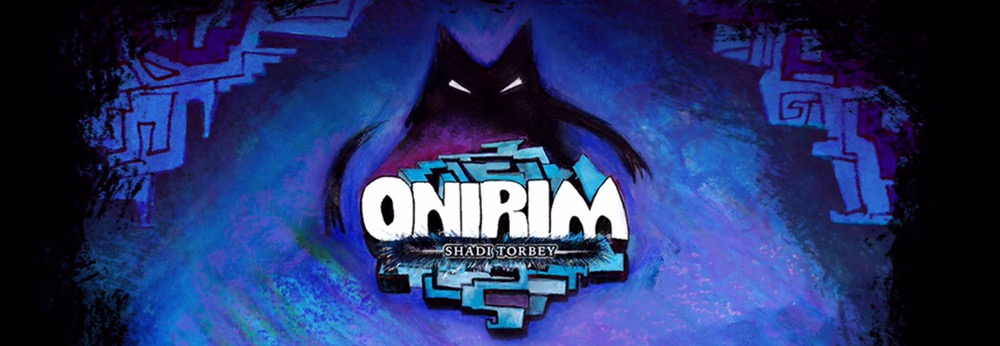
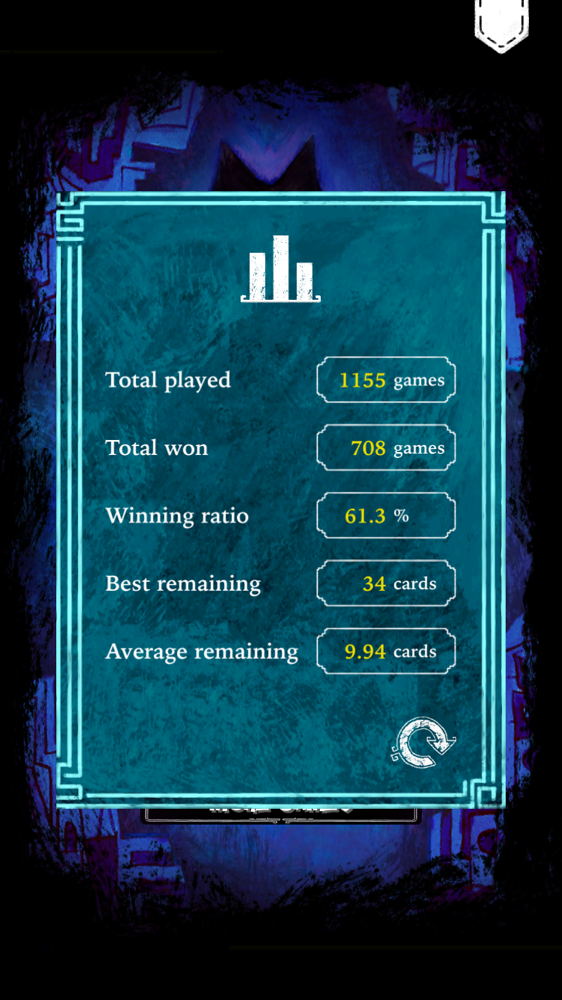
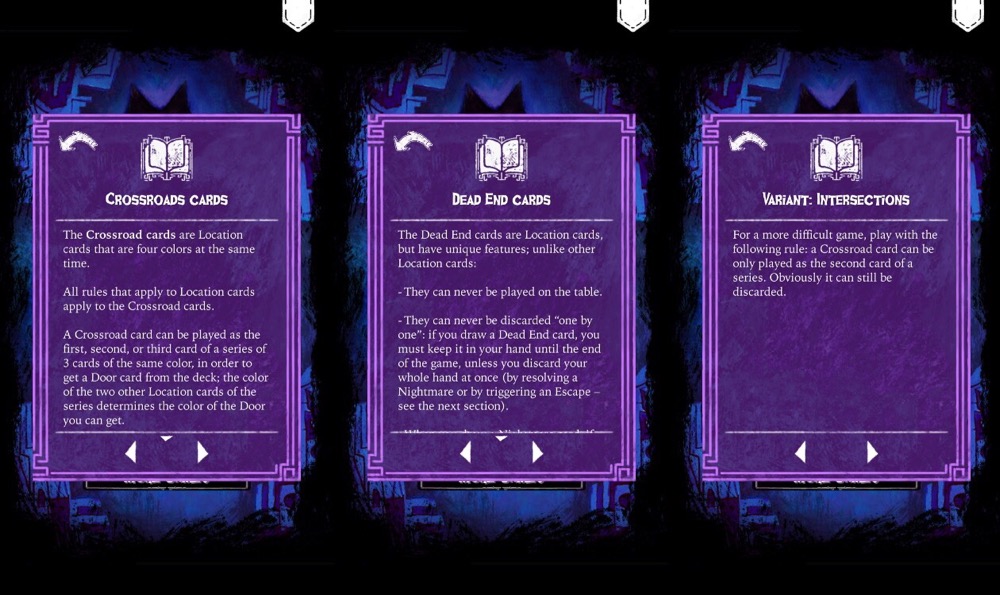


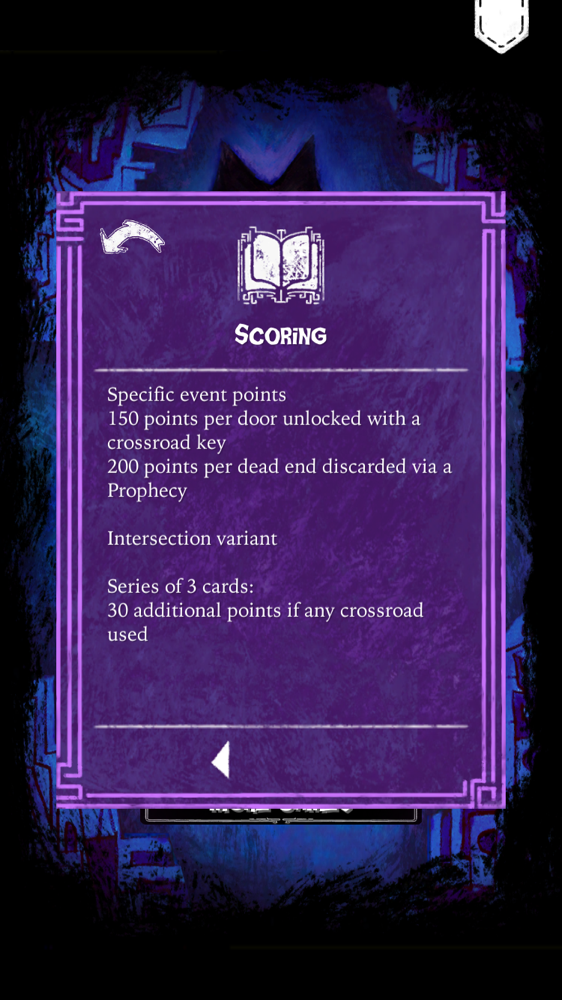
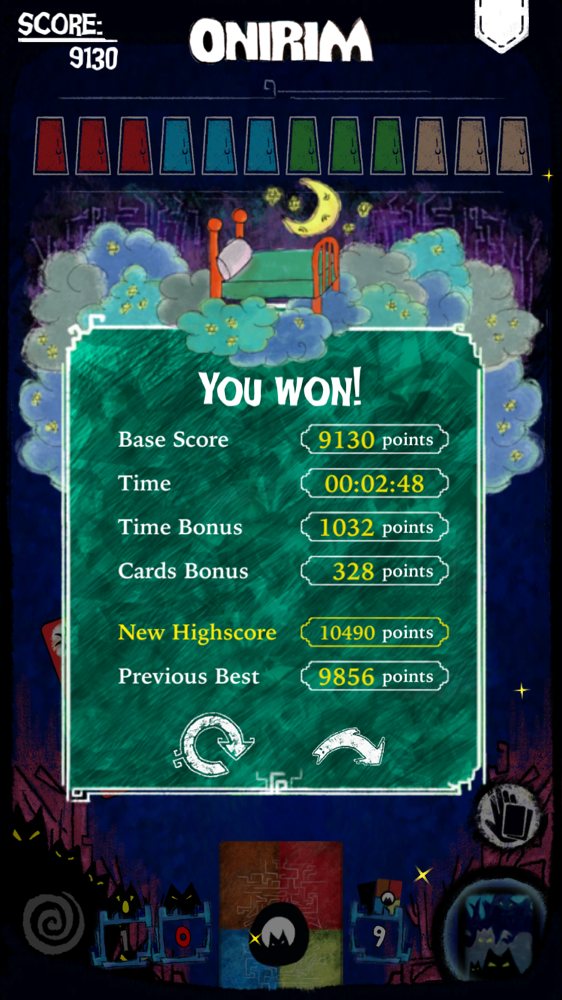
i hope the developer appreciates all the time and energy you put into this analysis! They should be paying you! 🙂
Ha thanks! I hope so, too, but I’m not so sure they do!
Great article!
Thanks! 🙂
Fun game but I really could care less about scoring/leaderboards. I just ignore that part when I’m done and move on to the next game. They really should just make it an option to use scoring.